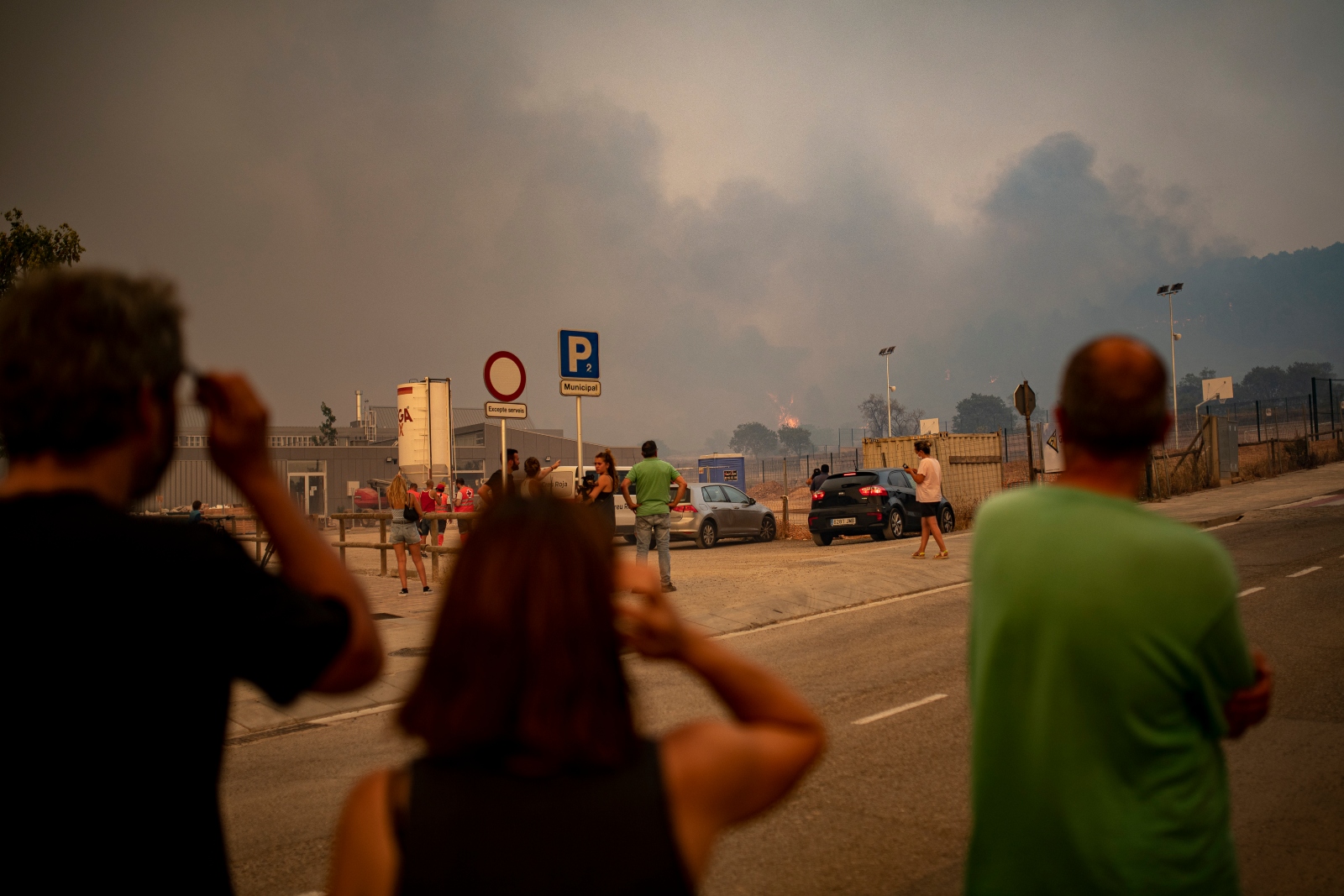The punishing heatwave that has roiled western Europe over the last week abated on Wednesday, heading east toward central Europe. The heat broke records across the United Kingdom and France and left a path of destruction in its wake: Train tracks and roads in London buckled, homes burned down in what was the city fire service’s “busiest day since the Second World War,” and parts of France and Portugal continued to blaze, forcing thousands to flee.
Extreme heat already inflicts a deadly toll on public health. In Spain and Portugal, where the national high reached 117 degrees, officials have reported more than 1,900 heat-related deaths in the last week — a number sure to rise in the coming weeks. But there’s a dangerous side effect too: air pollution. And as climate change leads to more frequent and severe heatwaves, bouts of bad air quality are exacerbating their health impacts.
On Tuesday, scientists from the European Union’s Copernicus Atmosphere Monitoring Service warned of unhealthy levels of ozone across a large swath of Europe. “The potential impacts of very high ozone pollution on human health can be considerable,” said Mark Parrington, a senior Copernicus scientist, in a release. Ozone can cause a host of respiratory issues, like a sore throat, cough, or asthma attacks, and cardiovascular illness. According to the Climate and Clean Air Coalition, it contributes to 1 million premature deaths around the world each year.
Ground-level ozone pollution is not emitted directly to the atmosphere. Rather, it forms when greenhouse gasses and emissions from cars, industrial facilities, and power plants are mixed into a chemical soup, which the sun then bakes into ozone. Heat speeds up those reactions, so ozone levels tend to skyrocket on extremely hot days.
The searing heat and dry conditions also primed southern Europe to burn, and wildfires are still raging across Portugal, Spain, and France. Those blazes also contributed to poor air quality by producing thick plumes of fine particulate matter, also known as PM2.5. When people inhale the fine soot, it makes its way deep into the lungs or even the bloodstream, increasing their risk for asthma, heart attacks, and strokes.
When a heatwave settles over a region, the air flow halts and pollutants linger. “The stable and stagnant atmosphere acts as a lid to trap atmospheric pollutants,” said Lorenzo Labrador, a scientist at the World Meteorological Organization in Geneva, Switzerland, in a briefing last week. “These result in a degradation of air quality and adverse health effects, particularly for vulnerable people,” such as older people, the immuno-compromised, or the homeless.
According to Copernicus, wildfires in Spain have also poured 1.3 million tons of carbon emissions into the atmosphere in the last two months — more than any previous June-July period in the country since 2003.
Of course, all of this takes place amid Europe’s latest COVID-19 surge. In the last six weeks, cases have tripled and hospitalizations have doubled. As the continent’s heatwave crawls east and the air quality plummets, officials worry that hospitals can’t keep up with the overlapping crises.




